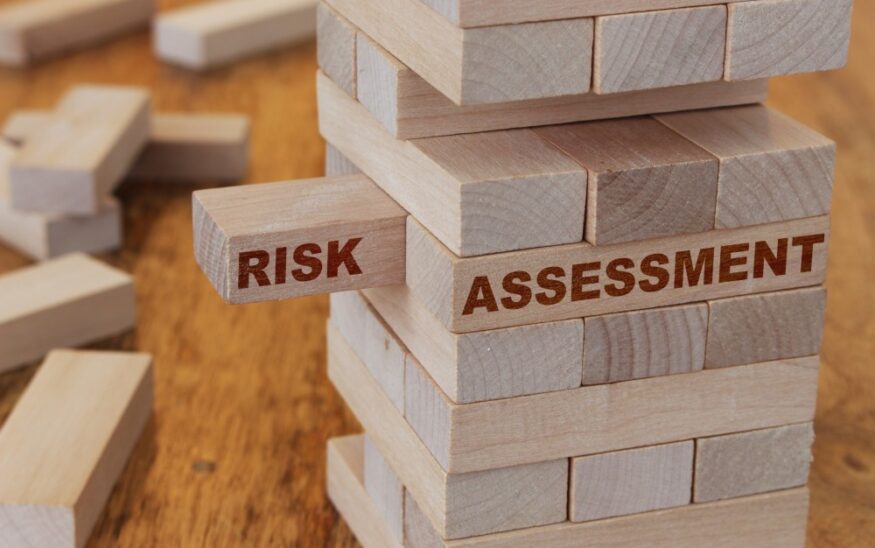How to do an annual risk assessment for your business
Risk is fundamental in managing a successful business
Doug Griess //November 15, 2021//


How to do an annual risk assessment for your business
Risk is fundamental in managing a successful business
Doug Griess //November 15, 2021//
Risk is fundamental in managing a successful business. Of course, companies should work to avoid risks, but in today’s corporate world, risks are rampant, multifaceted, and profoundly interrelated.
Companies should create risk assessment processes that are practical, logical, and easily maintained.
A well-organized annual risk assessment tool accounts for the company’s size, complexity, and locations of its employees, customers, and other stakeholders. A risk assessment is a tool that allows an organization to acquire a holistic view of the risks it faces.
With the knowledge obtained through an annual risk assessment, the organization’s management can identify their risks and capitalize on opportunities to mitigate them.
What’s Included in an Annual Risk Assessment?
While the annual risk assessment process will look different from one business to the next, the general steps involve the following:
Identify the Risks
What risks does the company face? One standard definition of risk is any incident that negatively impacts the ability to achieve your business goals. Risks affect a business’s ability to:
- Survive
- Successfully compete within its industry
- Maintain its financial assets
- Keep its positive public image
- Maintain or improve the overall quality of its products, services, and workforce
Consider the risks from various points of view within the company, accounting for each area’s goals and objectives. For example, insurance risk and operational risk are both areas of risk to include in your assessment.
Generate Assessment Criteria
A company can’t assess its risk without criteria and a rating scale. When developing the criteria for risk assessment, the business should generate a common set of standards that can be applied across all company areas.
Frequently, risk management teams label risks and opportunities according to their potential results and the chances that they will occur.
Some companies also examine risks by the company’s vulnerability to each and how quickly a severe risk could impact them.
Assess Risks
Risk managers should assess risks both individually and collectively. Assessing risks highlights the most critical ones and provides opportunities to establish the groundwork for quick and effective risk response.
Usually, a qualitative assessment occurs first, including assessing risks and opportunities according to the rating scales determined in the assessment process. Then, risk managers should make a quantitative analysis of the most crucial risks by assigning numerical values for their impact and likelihood. Scenario analysis, point estimates, and forward-looking models are typical in quantitative analysis.
Now is also an excellent time to ensure as many risks as possible are mitigated with the appropriate insurance policies in the right amounts. Other helpful steps to identifying and mitigating risk include annual contract reviews and conversations with employees.
Assess Risk Interactions
When performing a risk assessment, risk managers must examine each risk and each risk’s interactions with other circumstances and actions. Risks that seem independently insignificant could be explosive when interacting with each other.
One way to account for risk interactions is by using a risk interaction map. The same list of risks forms the “x” and “y” axis, and risk managers can then notate the intersection of risks that interact.
Prioritize Risks
Next, it’s imperative to compare the different levels of risk against the organization’s risk tolerance threshold. A standard tool that helps with this step in the process is a list of risks.
Each risk is ranked by hierarchy and then plotted on a heat map or using an aggregate individual risk distribution combined with a cumulative loss probability distribution. Qualitative factors should also be taken into consideration.
Respond to Risks
Finally, once a business knows its most significant risks and priorities, it will need to determine how to respond to them. Risk response options include:
- Accept
- Avoid
- Transfer
- Mitigate
- Exploit
Measuring the Risks
Businesses can find themselves as defendants in lawsuits over hundreds of issues. One of the most common is in discrimination suits or other legal matters involving employees or former employees.
The 2017 Hiscox Guide to Employee Lawsuits reveals that nearly 12 percent of businesses find themselves in discrimination suits with employees. These claims cost each company an average of an average of $160,000 and 318 days to resolve.
Another Hiscox study found that almost 20 percent of small businesses will face employee litigation, with a price tag of approximately $125,000 to defend. If a case goes to trial, 25 percent will result in a judgment near a half-million dollars.
Mitigating Risk with Legal Counsel
Even though Colorado isn’t one of the riskiest states, business owners must be aware and vigilant. Unmitigated risks can harm the company’s culture, reputation, and bottom line.
One of the most effective ways to stay protected is by working with a business law firm.
Law firms serving Colorado businesses understand the unique risks business owners face and how to mitigate them under federal, state, and local laws.

























